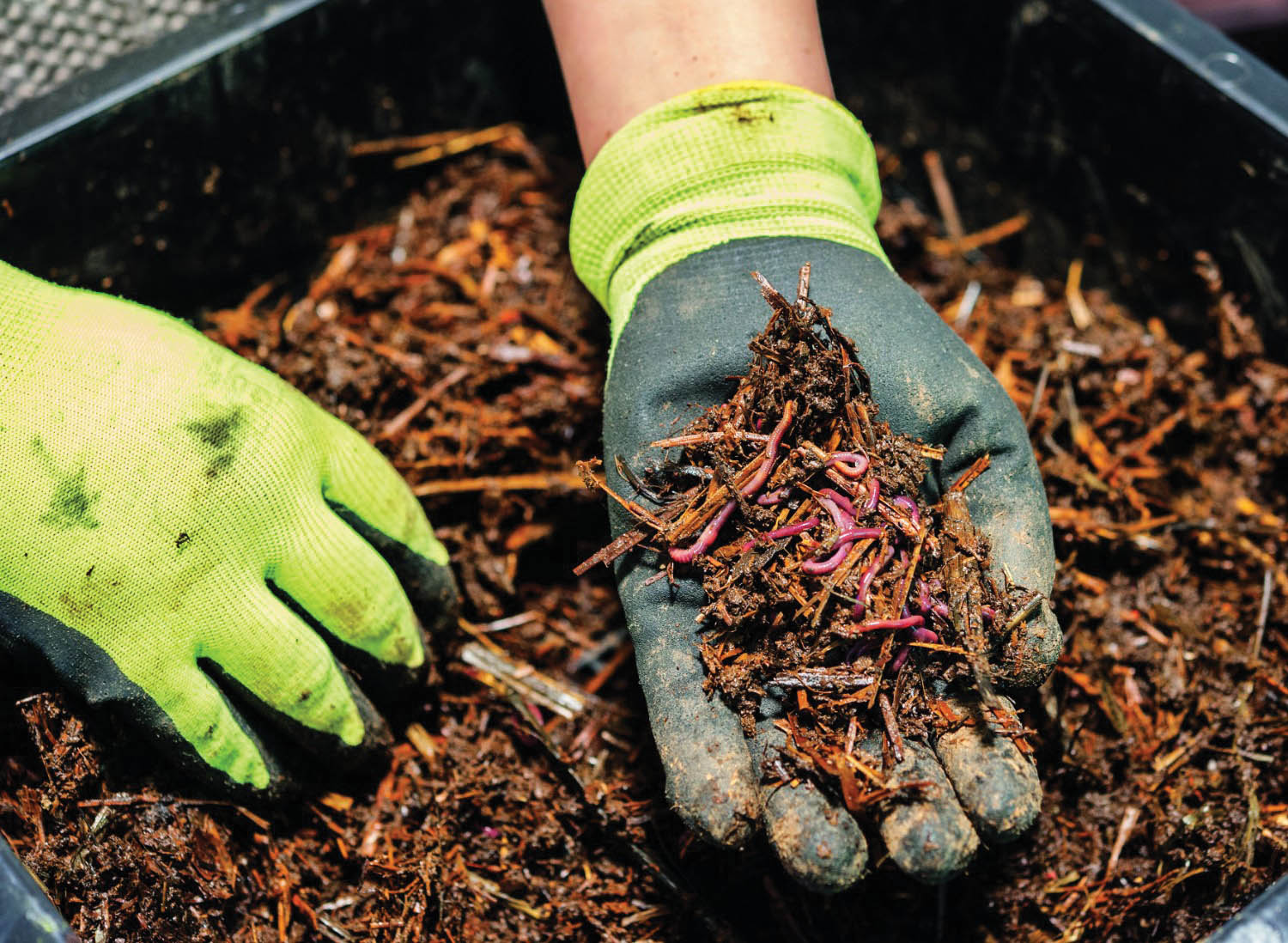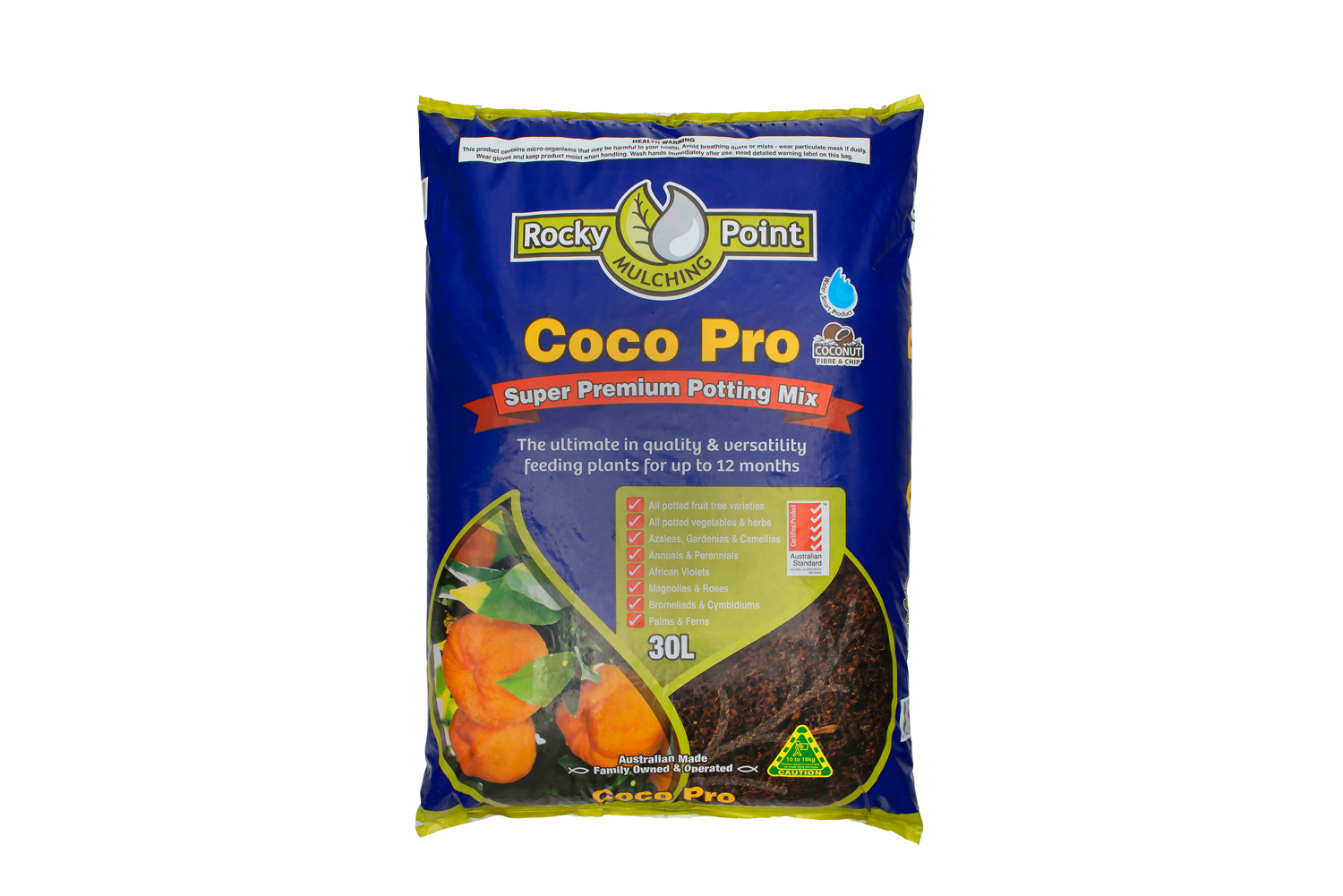While the new year may bring some updated resolutions to home gardeners, the only resolution that invertebrate pests have made is to make the gardener’s life as difficult as possible this January. I am fortunate to have a scope over what’s happening in Aussie backyards, nurseries, and my own potted courtyard, and there’s one thing we all have in common: the pests have been rampant
However, I’ve been trying to take note of all the insects that I see loitering around my plants, and what I’ve found is that there’s not too many baddies. In fact, almost all the insects I’ve seen over the past month or so I would consider beneficial. That doesn’t take away from the fact that it doesn’t take many baddies in my courtyard to knock a few holes into my fruit trees – so here’s a bug guide and what I keep in mind when I see certain insects!
Good bug guide and their signs
Fungus eating ladybird:
This beetle is a distinctive yellow and black native beetle. It’s almost the exact same size and shape as the conventional black and red spotty lady beetle. This ladybird eats mould and mildew, the latter which can be a problem on certain vegetable crops and, very occasionally, fruit trees and shrubs.
These little guys are a great indication that you may have a powdery or downy mildew problem which may not be visible, or that the area your trees are in is staying damp and shaded enough to facilitate mould growth. While they can’t control a bad infestation of mildew on their own, let them do their work and then wipe leaves with a 50:50 methylated spirits to water mixture in the late evening.
Red ladybird beetle:
This beetle has historically been near and dear to the human heart, even more so now that we are learning more about their potential benefits to the home and commercial garden. For now, I use them as a barometer of pest insect infestation. If I see many red ladybirds on several of my trees, I know that they are there because there’s plenty for them to eat.
Usually, I take this as a sign of aphids, and they’re easy to locate. Aphids suck on new growth or around flowers, particularly new flowers, but detest water. A quick spray with the jet function of your hose will knock them right off! The best thing? It doesn’t affect the ladybirds!
Jumping spiders:
Depending on what I’m about to spray for, seeing a jumping spider can urge me to put my sprayer away. Jumping spiders can eat ants, flies, mealybugs, and more! While they alone will not eradicate my problem, they will contribute to reducing the problem for me and my plants. If the pest burden is too high for them, that’s when I intervene!
Lacewings:
I infrequently notice lacewings in my courtyard because I’m almost never home when they’re most active. I do, however, quite often see their egg sacs deposited under the leaves of my outdoor plants. While they are similar to the eggs of other insects, like butterflies, they are normally in a greater quantity.
Lacewing larvae consume aphids, mealybugs, thrips, mites, leafhoppers, and more! These insects are extremely important in gardens so it’s crucial to leave their eggs alone. You’ll know to monitor your garden when you do spot some eggs – you’ll either see tiny lacewing larvae, or caterpillars, both of which are motivating to spot for opposite reasons!
Bad bug guide and their signs
While there’s plenty of bad bugs I could talk about, we’ve already touched on them in our Common Fruit Tree Pests and Diseases article. Check it out! Otherwise, there are a few key signs that I look out for, here they are:
Ants:
I’ve talked about them before, but it’s important to realise when they’re harmless, and when they’re causing harm. For many stone fruit, you’ll find ants will regularly travel up and down the trunk onto the leaves – this is fine if the variety has extrafloral nectaries (that look like little yellow or green lumps on or around leaves). Ants actually service plant species with extrafloral nectaries – their presence on the plant protects it against other insects, which is an incredible feat of evolution by these trees!
I become concerned when ants are slowly moving in tight spaces, around buds, and developing branches. This behaviour is indicative of scouts looking for the perfect place to farm scale or mealy bugs. Rather than spray for the sucking insects, use ant bait to control the ant population. Try to avoid baiting every time you see an ant – only when you see suspicious activity!
Oriental Fruit Moth:
Being in QLD, the only deciduous fruit trees I grow right now are low chill stone fruit. One of the most frustrating pests of stone fruit is the Oriental Fruit Moth (OFM); if the larvae aren’t eating and killing young shoots, the adults are laying eggs in and spoiling fruit! In other growing regions, OFM can cause serious damage to pomme fruits too.
While in my garden this isn’t the most dramatic problem (given the right conditions stone fruit will bounce back faster than you can say Oriental Fruit Moth) it can be frustrating if you’re counting on healthy vegetative growth. The best way a home gardener can slow this moth down is to use OFM pheromone lures which can disrupt reproduction in a home garden, and to open the canopy of your stone fruit so that moth predators can access them and eat them.
Higher amounts of precipitation can indicate a larger population of OFM, so watch out after wet seasons!
Sooty Mould:
While the sooty mould you sometimes find on lemons and sickly deciduous fruit trees is technically a mould, it’s the sign of something worse! Sooty mould is created when scale (or aphids, psyllids, leafhoppers, mealybug etc) excretes honeydew onto tree branches, which then facilitates the growth of opportunistic sooty mould (a fungus). The true trifecta is when you see ants, scales, and sooty mould!
Making a solution of warm water and dish soap will not only suffocate the scale and mould but will loosen the sticky material on the branches. Usually when you rinse this mixture off, much of the mould and scales come with the water. From here, you may need to do several treatments, and you might want to investigate controlling the ant population.
Leaf chewing insects:
There’s plenty around, and there’s far too many to go through! In my garden, I have a few leaves nibbled on here or there – yet I have never exacted any control for this. The reason? It’s never bad enough for me to bother! Leaf eaters tend to target annual vegetables and herbs, not so much fruit trees and shrubs. Moreover, fruit trees and shrubs often have so much foliage that a few munches won’t ever affect them.
Usually, if you have one tree suffering from an onslaught of pest attacks and not the rest of the garden, the tree was most likely under stress prior to pest attacks. Phil Nixon of the University of Illinois surmised that leaf eating insects like grasshoppers preferred drought-stressed plants because their sugar and nitrogen levels are more concentrated and release less insect-deterring chemicals that normally disrupt feeding. On the contrary, Nixon explained that caterpillars prefer plant material with high amounts of water – perhaps why we often see them on lettuce and other herbaceous plants. Regardless, healthier plants can survive insect attacks easier than an unhealthy plant.
The take home here is that you must investigate the preferred parameters of your more precious garden varieties to find out if the conditions you provide are suitable! If you don’t provide the right conditions for your deciduous fruit tree or bush, you may be inviting the pests in or setting it up for failure if pests take a fancy to it!
Habits to start now:
- Visit your garden once every day when possible, and closely investigate all plants. Just like diseases, pests can quickly transfer from your less important decorative shrub to your essential fruit trees at the blink of an eye! Take note of pests, how many you can see, and if you think they’re spreading.
- Remove or treat sick or dying herbaceous plants quickly – pests will jump on them and can move to your fruit trees very fast.
- Use a cloth dipped in 50:50 methylated spirits and water (or the dish soap and water solution mentioned above) when you see suspicious bugs before you pull out the spray. Often a bit of time and TLC will fix the problem anyway!
- Follow plant care guides. Not just the labels, but online and paperback information – it’s written to help you!
- Pick up fallen fruit but leave pockets of leaves on the ground away from your garden (this will create a habitable area for beneficial insects).
It may seem daunting, but by and large the insect community would prefer to be in the bush than meddle with our backyard gardens. With the most important habits under your belt, you can feel confident that if there’s a problem, you’ll spot it and deal with it consciously! And remember, there’s no perfect garden that escapes nature. Working with it is much easier than against it!
For more information,













